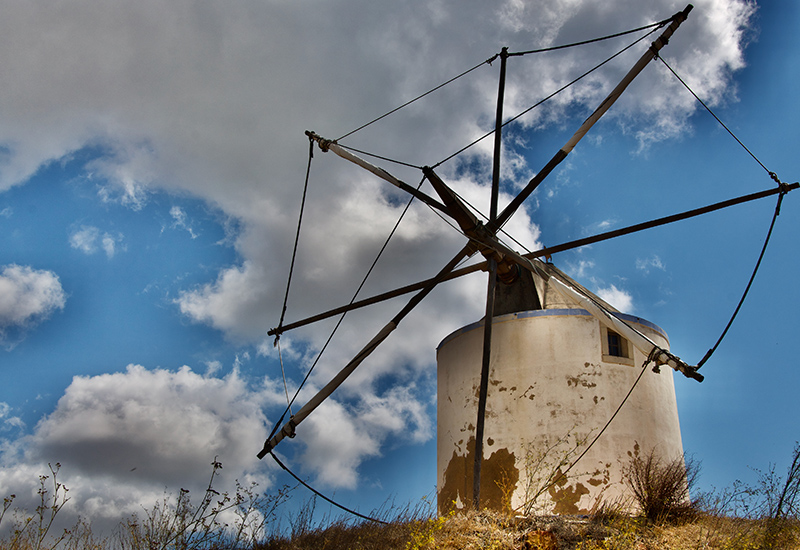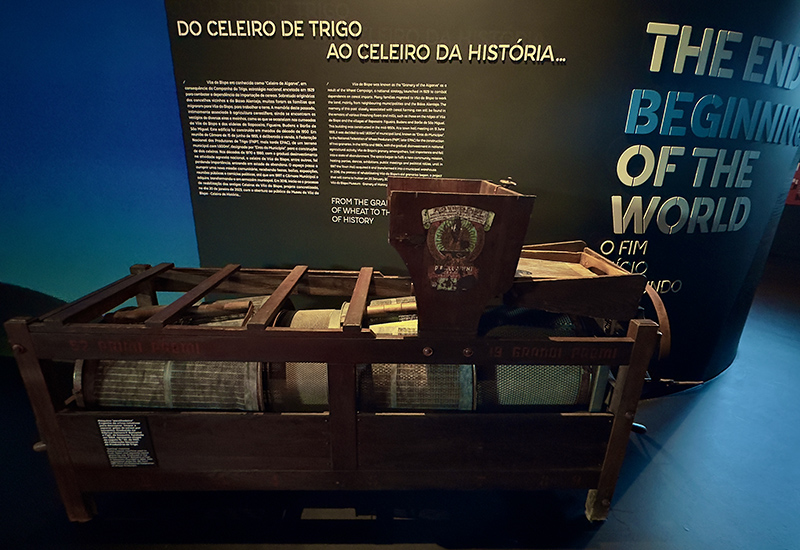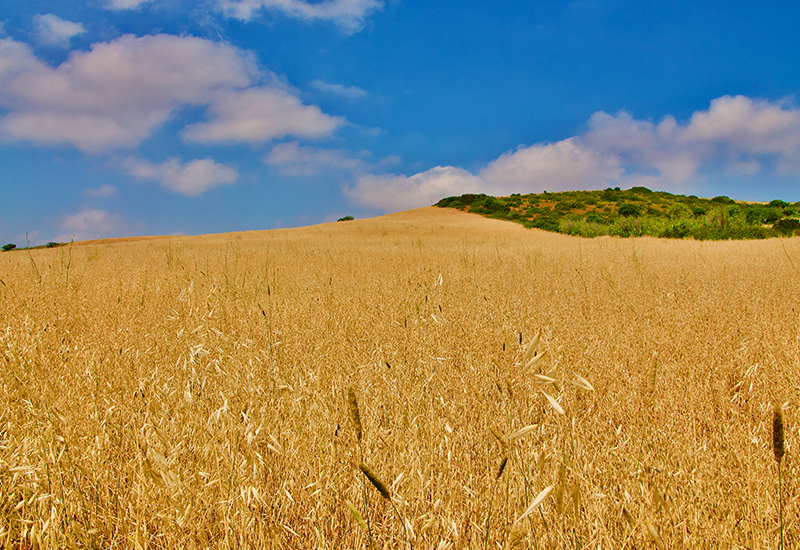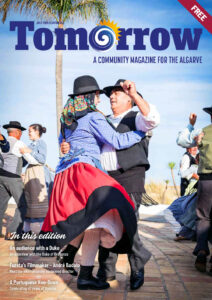From the granary of wheat to the granary of history…
Vila do Bispo was known as the Granary of the Algarve as a result of the Wheat Campaign, a national strategy launched in 1929 to combat dependence on cereal imports.
Many families migrated to Vila do Bispo to work the land with cereal farming, mainly coming from neighbouring municipalities and the Alentejo. The evidence of this former industry can still be found in the remains of various threshing floors and mills, such as those on the ridges of Vila do Bispo and the villages of Raposeira, Figueira, Budens and Barão de São Miguel.

At a town hall meeting on 15 June 1955, it was decided to sell 1,600m2 of municipal land, known as Eiras do Município, to the National Federation of Wheat Producers (FNPT, later EPAC) for the construction of two granaries. The buildings on the edge of the town were constructed in the mid-1950s. In the 1970s and 1980s, with the gradual disinvestment in national agricultural activity, Vila do Bispo’s granary, among others, lost importance and fell into a state of abandonment. The space began to fulfil a new community mission, hosting parties, dances, exhibitions, public meetings and political rallies until 1997, when the Town Hall acquired it and transformed it into a municipal warehouse.
In 2016, the process of rehabilitating Vila do Bispo’s old granaries began, a project that came to fruition on 20 January 2024 with the opening to the public of the Vila do Bispo Museum – Celeiro da História (Granary of History).
Despite this era being confined to history, the old customs are still very much present. The countryside is still combed with cereal and the shepherds still drive their cattle through the softness of the valleys, remote movements that persist in time and in the strength of the local people.

A Sorting Machine
On display in the museum is a rotary sieve machine that came from one of the granaries in Vila do Bispo. It was made in 1957 and has registration plate No. 69 from the National Federation of Wheat Producers. The machine was produced in the Italian factory – P. Ballarini e Figli in Sassuolo – and was used to husk, clean, and separate cereal grains by size.
A Toast to History
The Sagres beer brand was created in 1940 by Sociedade Central de Cervejas as a prestige beer for its representation at the Portuguese World Exhibition, held in Lisbon between 23 June and 2 December of that year.
Ricardo Soares is the Archeologist at the Museu de Vila do Bispo.
The Vila do Bispo Museum – Celeiro da História was inaugurated on 20 January, 2024, in a ceremony presided over by Mayor Rute Silva, in the presence of the president of CCDR Algarve, José Apolinário.
This museum space includes an expository/interpretive narrative about the municipality’s collective heritage from its geological foundation. The exhibits lead you through the local evidence of dinosaurs to archaeological finds, shipwrecks, fishing and stories from WW2 that explain the history and character of its people.
This recourse is the result of an investment of more than 2.9 million euros, which was financed by the CRESC ALGARVE 2020 Program.
Open Tuesday to Sunday, 10 am to 6 pm
€5.00 / €2.50 (discount rate)
Sítio das Eiras, 8650-405 Vila do Bispo
www.facebook.com/museuviladobispo
Photos © Ricardo Soares













